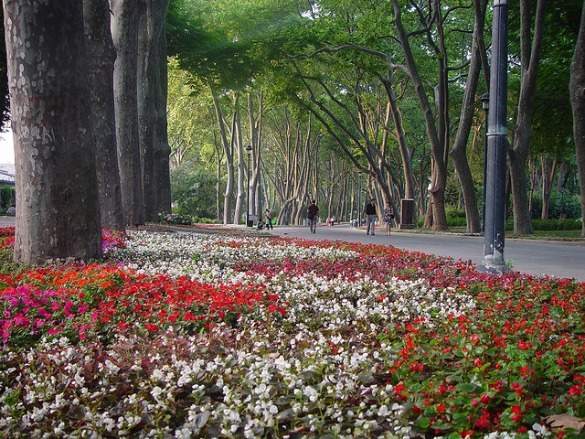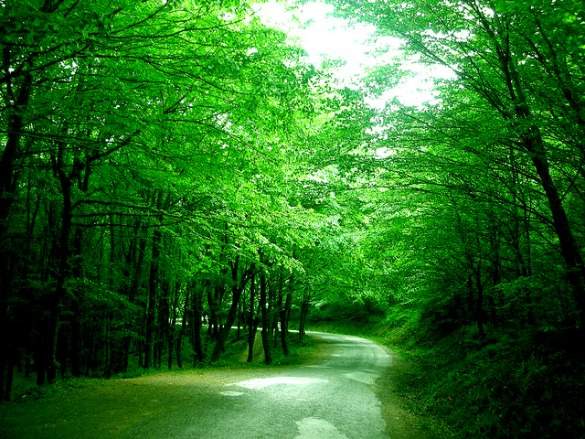With a population of well over 14 million and spread over the two continents of Europe and Asia, Istanbul isn’t the first place which comes to mind when it comes to top nature destinations. But this mighty city has much more to offer than its historical, cultural and culinary attractions. Set over four major bodies of water- the Bosphorus Strait, Golden Horn, Marmara Sea and Black Sea- and boasting lush parklands, forests, beaches and even its own islands- Istanbul offers many opportunities to get back to nature.
Even within the central city limits, there are plenty of ways to escape the crowds, and one of the best places to do this is to visit one of the many parks. Parks have been celebrated attractions in Istanbul for centuries, and several of them were part of extensive palace complexes during the Ottoman era. The optimum time to experience these is in April, when the annual Istanbul Tulip Festival prompts an explosion of colour all over the city. Unbeknownst to most, the tulip is native to Turkey, and is deeply loved and honoured in Turkish culture and arts.
The oldest public park in Istanbul is Gulhane Park, a lush wonderland of gently curving paths, elegant water features and old plane trees. Bordering the majestic Topkapi Palace (having once been a mere fraction of its grounds), it has a number of benches scattered about to recline on. One of the best spots in the Park, however, is in the resident tea garden which enjoys stunning views over the water.
Another with views to kill for is Yildiz Park, one of Istanbul’s largest urban commons. The area was used as a hunting ground by Sultan Abdulhamid II, who later made some welcome additions including a lake. Locals love to explore the Park’s diverse range of flora and fauna, and it’s also a popular haunt for picnic makers.
A little further afield lie some of Istanbul’s most beautiful natural attractions- and the best part is that most of them are within easy reach of the city centre. Whether you are there to relax amidst the natural scenery or engage in a little adventure, a good place to start is with an organic village breakfast in one of Istanbul’s loveliest retreats. Polonezkoy, situated in the outer reaches of the city’s Asian side, was founded by Polish settlers in 1842 and has maintained elements of the language, culture and traditions of Poland ever since.
This charming village is scattered with places selling fresh, locally produced organic produce including fruit and vegetables, honey, jams and other homemade delights. There are also a handful of gorgeous cafes offering tasty breakfasts and garden barbecues. Polonezkoy is an ideal base for exploring the surrounding countryside and has a dedicated 5km hiking track which winds through open fields and pine forests. Come here during the month of June, when the Polonezkoy Cherry Festival kicks off, showcasing the region’s famous cherries and traditional dancing abilities.
Across the water on Istanbul’s European side, the spectacular Belgrad Forest is enough to make Robin Hood green with envy. Located about twenty kilometres from the city centre, Belgrad Forest boasts around 5,500 hectares of forested land. Sultan Suleyman the Magnificent settled the area with Serbs during the 16th century to help guard the Forest’s reservoirs, giving rise to its namesake. Among its attractions are a six and a half kilometre jogging route, public exercise equipment and seven main picnic areas. One you’ve worked up a thirst exploring the huge mix of flora, fauna and animal species, take a long drink from one of Belgrad Forest’s own natural springs. The 550-hectare Ataturk Arboretum makes up a part of the Forest’s limits and is home to more than 2,000 different kinds of living trees.
When it comes to beaches, Istanbul is no Honolulu (or Sydney for that matter). Unfortunately the large population and ensuing pollution make many of the city centre’s beaches unswimmable, though there have been recent efforts to clean them up. Heading out by ferry from Istanbul’s core, the Princes’ Islands beaches have their own charm. This chain of nine islands in the Marmara Sea is a popular holiday destination for locals and visitors due to the beautiful natural landscape and laid back way of life. The most visited of these islands is Buyukada (meaning ‘Big Island’), where bicycle and horse-and-cart are the default methods of transport. The island is blanketed in verdant pine forests and there are many small coves to explore along with the old wooden mansions, fish restaurants and historical sites.
Heading out to the Black Sea, Istanbul’s best loved beaches and dramatic countryside is within just an hour’s drive. This notoriously beautiful coastline is often missed off the itinerary of tourists, making it all the better for those who take the time to stop by. The ideal time to visit is during the summer months, when the relentless rains have subsided and the sea is warm enough for a dip. On the European side, the former Greek colony of Riva boasts long sandy beaches, gentle streams and forestland. Further along on the Asian continent are Agva and Sile, two Black Sea gems. Do as the locals do and join in a beachside barbecue while taking in the magical surroundings- getting back to nature the Istanbul way.
Helen Simpson is an Istanbul-based writer and editor for online travel guide, MyDestination.com. When she’s not documenting the city, she’s exploring its lesser known backstreets in search of the best street food around.

